
Stephen Jay Gould’s “Reflections in Natural History” Series
Stephen Jay Gould has several collections of essays that showcase present various evolutionary processes, patterns, and concepts through wonderfully written vignettes of wonderfully fascinating natural history. I do not think it would be an exaggeration to say that if you were able to absorb all the understanding, insight, wisdom, and ideas in these fantastically informative and fantastically-entertaining shorts, you would learn more than you ever could over multiple undergraduate evolutionary biology courses, and have a lot more relaxed and fun of a time while doing it! Each book is a stand-alone collection of short essays, and the books do not need to be read in any particular order (e.g., you do not need to read the “first” in the series before the any of the others). (In some cases, each essay within each book itself are also largely standalone, so you do not even need to read all the chapters in order). So you just pick one — any one! — and dive in.
It should be noted that Gould has many other books. These are in-depth treatments of special topics. They are all great and worthy of reading. With the exception, paradoxically, of one (in my humble opinion): “The Structure of Evolutionary Theory”. I say paradoxically because my understanding is that Gould himself considered this his magnum opus, his most important work, and his ultimate contribution to the (technical) science of evolutionary biology as opposed to its popularization.
I’m afraid to say that I found “The Structure of Evolutionary Theory” bloated and meandering and, worse, decidely polemical in places with misguided attacks on some of his opponents' positions (and in some cases, unfortunate, deliberate or otherwise, misrepresentations of his opponents' positions). That is not to say that there isn’t (a lot) of good stuff there, but it tends to be all tangled up with the bloat and polemic, and a reader unfamiliar with the lay of the land may not be able to tell the good from the bad, while the reader who is familiar with the issues would find it all too tiresome to get through to be worth it. Fortunately, publishers have extracted the most important and useful chapter of this book out into a stand-alone book, “Punctuated Equilbrium”, which presents what arguably is actually Gould (and Niles Elridge’s, his collaborator) most important contribution to technical evolutionary biology.
But all this is an aside. There is no doubt (again, in my humble opinion) that hundreds of essays that Gould wrote communicating complex evolutionary biological concepts in a lucid and entertaining way to the general reader without dumbing them down, inspiring wonder and awe and excitement, and, most of all, understanding in generations of people from across all walks of life around the planet, stands as Gould’s greatest achievement to the benefit of all of us. I am profoundly indebted to his essays for motivating (and actually changing!) the course of my life to take me down the road of evolutionary biology. I am sure that there are many others like me.
Dawkins: Compelling Frameworks for Understanding Evolution (from the POV of the Gene and Other Perspectives)
There are several excellent books by Richard Dawkins that really created, or otherwise grounded, popularized, and/or extended some powerful ways to think about evolution and evolutionary biology. Most of the concepts raised in some of these books are (or have become) fundamental components of modern scientific evolutionary biological perspectives, and some of these have also taken a life of their own in 21st century mainstream thinking (e.g., “memes”). If you could pick only one of the following, then it would absolutely have to be the “The Selfish Gene”, but they are all worth the read. In fact, if you were to pick only one book from this entire page, it would also absolutely have to be “The Selfish Gene"!
Some might think it interesting (and also paradoxical) that I put Dawkins here next to Gould, given that great, public, bitter, and irreconcilable disagreements with each other. This conflict has been excellently document in “Dawkins vs. Gould: Survival of the Fittest ”, the crux of which lies in different perspectives of evolution:
For what it’s worth, I fail to see any reason either viewpoint has to be mutually exclusive. Evolution works on different levels, and in each of those levels works in different (and maybe even opposite) ways. I have no problems seeing evolution being both gene-centric and organism-centric simultaneously, and think that the interplay and tension between these is sometimes where the most interesting evolutionary biology lies.
The Selfish Gene ( Richard Dawkins ; 1979 )
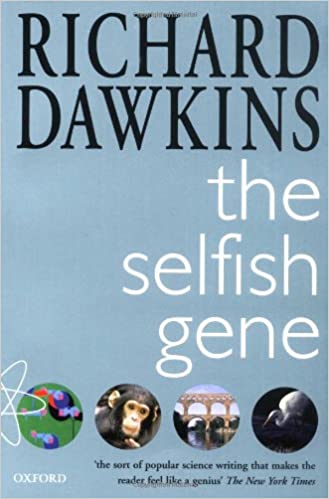
The Extended Phenotype: The Long Reach of the Gene ( Richard Dawkins ; 1982 )

The Blind Watchmaker: Why the Evidence of Evolution Reveals a Universe without Design ( Richard Dawkins ; 1986 )

Patterns and Stories of Evolution of Life on Earth
At the Water's Edge : Fish with Fingers, Whales with Legs, and How Life Came Ashore but Then Went Back to Sea ( Carl Zimmer ; 1999 )

Some Assembly Required: Decoding Four Billion Years of Life, from Ancient Fossils to DNA ( Neil Shubin ; 2020 )

Life on Earth ( David Attenborough ; 1979 )

Sexual Selection
The Evolution of Beauty: How Darwin's Forgotten Theory of Mate Choice Shapes the Animal World - and Us ( Richard O. Prum ; 2017 )
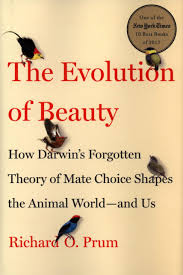
Sexual Selections: What We Can and Can't Learn About Sex from Animals ( Marlene Zuk Combes ; 2002 )

As she tells many amazing stories about animal behavior–whether of birds and apes or of rats and cockroaches–Zuk takes us to the places where our ideas about nature, gender, and culture collide. Writing in an engaging, conversational style, she discusses such politically charged topics as motherhood, the genetic basis for adultery, the female orgasm, menstruation, and homosexuality. She shows how feminism can give us the tools to examine sensitive issues such as these and to enhance our understanding of the natural world if we avoid using research to champion a feminist agenda and avoid using animals as ideological weapons.
The Ant and the Peacock: Altruism and Sexual Selection from Darwin to Today ( Helena Cronin and John Maynard Smith ; 1993 )

The Microbiome and Our Coevolution
I Contain Multitudes: The Microbes Within Us and a Grander View of Life ( Ed Yong ; 2016 )

When we look at the animal kingdom through a microbial lens, even the most familiar parts of our lives take on a striking new air. We learn the secret, invisible, and wondrous biology behind the corals that construct mighty reefs, the glowing squid that can help us understand the bacteria in our own guts, the beetles that bring down forests, the disease-fighting mosquitoes engineered in Australia, and the ingredients in breast milk that evolved to nourish a baby’s first microbes. We see how humans are disrupting these partnerships and how scientists are now manipulating them to our advantage.
Welcome to the Microbiome: Getting to Know the Trillions of Bacteria and Other Microbes In, On, and Around You ( Rob DeSalle and Susan L. Perkins ; 2015 )

Rob DeSalle and Susan Perkins illuminate the long, intertwined evolution of humans and microbes. They discuss how novel DNA sequencing has shed entirely new light on the complexity of microbe-human interactions, and they examine the potential benefits to human health: amazing possibilities for pinpoint treatment of infections and other illnesses without upsetting the vital balance of an individual microbiome.
This book has been inspired by an exhibition, The Secret World Inside You: The Microbiome, at the American Museum of Natural History, which will open in New York in early November 2016 and run until August 2016. It will then travel to other museums in the United States and abroad.
The Wild Life of Our Bodies: Predators, Parasites, and Partners That Shape Who We Are Today ( Rob Dunn ; 2014 )

Viruses and Our Shared Evolutionary History (and Future)
A Planet of Viruses ( Carl Zimmer ; 2012 )

A Planet of Viruses pulls back the veil on this hidden world. It presents the latest research on how viruses hold sway over our lives and our biosphere, how viruses helped give rise to the first life-forms, how viruses are producing new diseases, how we can harness viruses for our own ends, and how viruses will continue to control our fate for years to come.
Virolution ( Frank Ryan ; 2009 )

Darwin’s theory of evolution is still the greatest breakthrough in biological science. His explanation of the role of natural selection in driving the evolution of life on earth depended on steady variation of living things over time – but he was unable to explain how this variation occurred. In the 150 years since publication of the Origin of Species, we have discovered three main sources for this variation – mutation, hybridisation and epigenetics. Then on Sunday, 12th February, 2001 the evidence for perhaps the most extraordinary cause of variation was simultaneously released by two organisations – the code for the entire human genome. Not only was the human genome unbelievably simple (it is only ten times more complicated than a bacteria), but embedded in the code were large fragments that were derived from viruses – fragments that were vital to evolution of all organisms and the evidence for a fourth and vital source of variation – viruses.
Virolution is the product of Dr Frank Ryan’s decade of research at the frontiers of this new science – now called viral symbiosis – and the amazing revolution that it has had in these few years. As scientists begin to look for evidence of viral involvement in more and more processes, they have discovered that they are vital in nearly every case. And with this understanding comes the possibility of manipulating the role of the viruses to help fight a huge range of diseases.
Viruses: Agents of Evolutionary Invention ( Michael G. Cordingley ; 2017 )

In the last few decades, research has revealed that viruses are fundamental to the photosynthetic capacity of the world’s oceans and the composition of the human microbiome. Perhaps most fascinating, viruses are now recognized as remarkable engines of the genetic innovation that fuels natural selection and catalyzes evolution in all domains of life. Viruses have coevolved with their hosts since the beginning of life on our planet and are part of the evolutionary legacy of every species that has ever lived.
Cordingley explains how viruses are responsible for the creation of many feared bacterial diseases and the emergence of newly pathogenic and drug-resistant strains. And as more and more viruses jump to humans from other animals, new epidemics of viral disease will threaten global society. But Cordingley shows that we can adapt, relying on our evolved cognitive and cultural capacities to limit the consequences of viral infections. Piecing together the story of viruses’ major role within and beyond human disease, Viruses creates a valuable roadmap through the rapidly expanding terrain of virology.
The Parasite Life
Parasite Rex: Inside The Bizarre World Of Nature’s Most Dangerous Creatures ( Carl Zimmer ; 2001 )

Imagine a world where parasites are masters of chemical warfare and camouflage, able to cloak themselves with their hosts’ own molecules.
Imagine a world where parasites steer the course of evolution, where the majority of species are parasites.
Welcome to earth.
Parasites are among the world’s most successful and sophisticated organisms. They can transform the insides of other creatures into hospitable homes. They can evade the onslaught of the immune system and even make it serve them. They can even control the minds of their hosts and force them to do their bidding. And thanks to these skills, parasites may make up the majority of all species.
Parasite Rex offers a guided tour to the hidden, fascinating world of parasites, from protozoans that turn rats into suicidal kamikazes to wasps that turn their own DNA into viruses to help them parasitize caterpillars. It follows scientists who are beginning to appreciate how parasites can control the fate of entire ecosystems and even steer the course of evolution.
This Is Your Brain on Parasites: How Tiny Creatures Manipulate Our Behavior and Shape Society ( Kathleen McAuliffe ; 2017 )
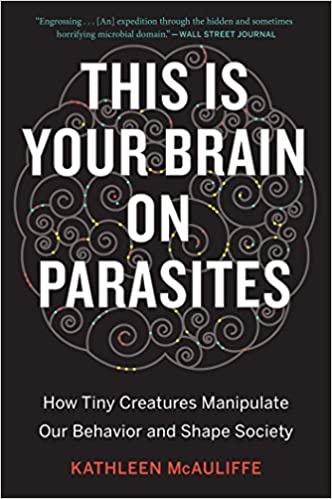
Parasites influence our species on the cultural level, too. Drawing on a huge body of research, McAuliffe argues that our dread of contamination is an evolved defense against parasites. The horror and revulsion we are programmed to feel when we come in contact with people who appear diseased or dirty helped pave the way for civilization, but may also be the basis for major divisions in societies that persist to this day. This Is Your Brain on Parasites is both a journey into cutting-edge science and a revelatory examination of what it means to be human.
The Art of Being a Parasite ( Claude Combes and Daniel Simberloff ; 2005 )
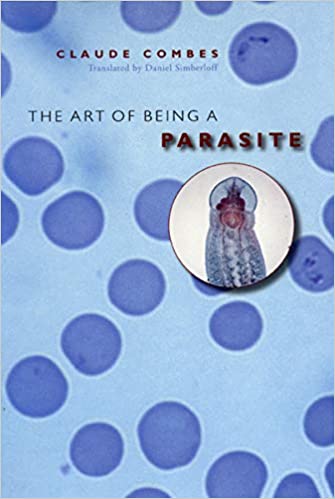
Pathogens and Disease
The Perfect Predator: A Scientist's Race to Save Her Husband from a Deadly Superbug: A Memoir ( Steffanie A. Strathdee ; 2019 )

Frantic, Steffanie combed through research old and new and came across phage therapy: the idea that the right virus, aka ‘the perfect predator,’ can kill even the most lethal bacteria. Phage treatment had fallen out of favor almost 100 years ago, after antibiotic use went mainstream. Now, with time running out, Steffanie appealed to phage researchers all over the world for help. She found allies at the FDA, researchers from Texas A&M, and a clandestine Navy biomedical center – and together they resurrected a forgotten cure.
A nail-biting medical mystery, The Perfect Predator is a story of love and survival against all odds, and the (re)discovery of a powerful new weapon in the global superbug crisis.
The Invisible Enemy: A Natural History of Viruses ( Dorothy H. Crawford ; 2003 )

In this fascinating new book, Dorothy Crawford explains lucidly and accessibly all aspects of the natural history of these deadly parasites and discusses controversial subjects such as CFS and Gulf War Syndrome. The book considers issues such as how man has coped with viruses in the past, where new viruses come from, and whether it would be possible for a new virus to wipe out the human race. Professor Crawford illustrates her arguments with vivid and wide-ranging examples. The result is an informative and highly readable book, which will be read by all those who seek a deeper understanding of these minute but remarkably efficient killers.
Virus Hunt: The Search for the Origin of HIV/AIDS ( Dorothy H. Crawford ; 2015 )

Dorothy H. Crawford traces the story back to the remote rain forests of Africa - home to the primates that carry the ancestral virus - and reveals how HIV-1 first jumped from chimpanzees to humans in rural south east Cameroon. Examining how this happened, and how it then travelled back to Colonial west central Africa where it eventually exploded as a pandemic, she asks why and how it was able to spread so widely.
From hospital intensive care wards to research laboratories and the African rain forests, this is the wide-ranging story of a killer virus and a tale of scientific endeavour.
Symbiotic Evolution
Symbiotic Planet: A New Look At Evolution ( Lynn Margulis ; 1998 )

The Tangled Tree: A Radical New History of Life ( David Quammen ; 2018 )

Darwin's Blind Spot: Evolution Beyond Natural Selection ( Frank Ryan ; 2002 )

Genetics and Molecular Biology
The Gene: An Intimate History ( Siddhartha Mukherjee ; 2016 )

“Mukherjee expresses abstract intellectual ideas through emotional stories…[and] swaddles his medical rigor with rhapsodic tenderness, surprising vulnerability, and occasional flashes of pure poetry” (The Washington Post). Throughout, the story of Mukherjee’s own family—with its tragic and bewildering history of mental illness—reminds us of the questions that hang over our ability to translate the science of genetics from the laboratory to the real world. In riveting and dramatic prose, he describes the centuries of research and experimentation—from Aristotle and Pythagoras to Mendel and Darwin, from Boveri and Morgan to Crick, Watson and Franklin, all the way through the revolutionary twenty-first century innovators who mapped the human genome.
“A fascinating and often sobering history of how humans came to understand the roles of genes in making us who we are—and what our manipulation of those genes might mean for our future” (Milwaukee Journal-Sentinel), The Gene is the revelatory and magisterial history of a scientific idea coming to life, the most crucial science of our time, intimately explained by a master. “The Gene is a book we all should read” (USA TODAY).
Life's Ratchet: How Molecular Machines Extract Order from Chaos ( Peter Hoffmann ; 2012 )

Below the calm, ordered exterior of a living organism lies microscopic chaos, or what Hoffmann calls the molecular storm – specialized molecules immersed in a whirlwind of colliding water molecules. Our cells are filled with molecular machines, which, like tiny ratchets, transform random motion into ordered activity, and create the ‘‘purpose’’ that is the hallmark of life. Tiny electrical motors turn electrical voltage into motion, nanoscale factories custom-build other molecular machines, and mechanical machines twist, untwist, separate and package strands of DNA. The cell is like a city – an unfathomable, complex collection of molecular workers working together to create something greater than themselves.
Life, Hoffman argues, emerges from the random motions of atoms filtered through these sophisticated structures of our evolved machinery. We are agglomerations of interacting nanoscale machines more amazing than anything in science fiction. Rather than relying on some mysterious ‘‘life force’’ to drive them – as people believed for centuries – life’s ratchets harness instead the second law of thermodynamics and the disorder of the molecular storm.
Grounded in Hoffmann’s own cutting-edge research, Life’s Ratchet reveals the incredible findings of modern nanotechnology to tell the story of how the noisy world of atoms gives rise to life itself
The Epigenetics Revolution: How Modern Biology Is Rewriting Our Understanding of Genetics, Disease, and Inheritance ( Nessa Carey ; 2012 )

Genome Evolution (and the Genomic Revolution)
Junk DNA: A Journey Through the Dark Matter of the Genome ( Nessa Carey ; 2017 )
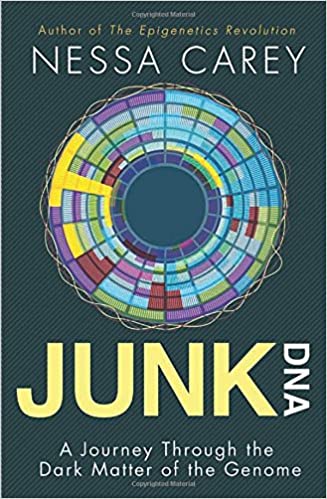
Junk DNA can play vital and unanticipated roles in the control of gene expression, from fine-tuning individual genes to switching off entire chromosomes. These functions have forced scientists to revisit the very meaning of the word ‘‘gene’’ and have engendered a spirited scientific battle over whether or not this genomic ‘‘nonsense’’ is the source of human biological complexity. Drawing on her experience with leading scientific investigators in Europe and North America, Nessa Carey provides a clear and compelling introduction to junk DNA and its critical involvement in phenomena as diverse as genetic diseases, viral infections, sex determination in mammals, and evolution. We are only now unlocking the secrets of junk DNA, and Nessa Carey’s book is an essential resource for navigating the history and controversies of this fast-growing, hotly disputed field.
The Deeper Genome: Why there is more to the human genome than meets the eye ( John Parington ; 2012 )

Things have changed since those early heady days of the Human Genome Project. But the emerging picture is if anything far more exciting. In this book, John Parrington explains the key features that are coming to light - some, such as the results of the international ENCODE programme, still much debated and controversial in their scope. He gives an outline of the deeper genome, involving layers of regulatory elements controlling and coordinating the switching on and off of genes; the impact of its 3D geometry; the discovery of a variety of new RNAs playing critical roles; the epigenetic changes influenced by the environment and life experiences that can make identical twins different and be passed on to the next generation; and the clues coming out of comparisons with the genomes of Neanderthals as well as that of chimps about the development of our species. We are learning more about ourselves, and about the genetic aspects of many diseases. But in its complexity, flexibility, and ability to respond to environmental cues, the human genome is proving to be far more subtle than we ever imagined.
A Crack in Creation: Gene Editing and the Unthinkable Power to Control Evolution ( Jennifer A. Doudna ; 2020 )
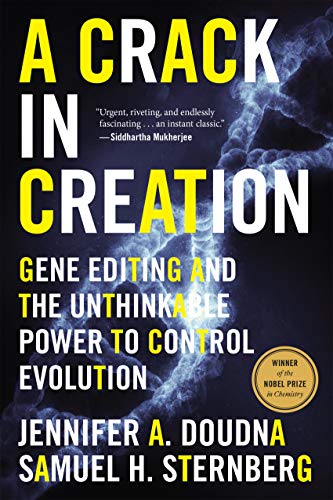
Not since the atomic bomb has a technology so alarmed its inventors that they warned the world about its use. Not, that is, until the spring of 2015, when biologist Jennifer Doudna called for a worldwide moratorium on the use of the new gene-editing tool CRISPR—a revolutionary new technology that she helped create—to make heritable changes in human embryos. The cheapest, simplest, most effective way of manipulating DNA ever known, CRISPR may well give us the cure to HIV, genetic diseases, and some cancers, and will help address the world’s hunger crisis. Yet even the tiniest changes to DNA could have myriad, unforeseeable consequences—to say nothing of the ethical and societal repercussions of intentionally mutating embryos to create “better” humans.
Writing with fellow researcher Samuel Sternberg, Doudna shares the thrilling story of her discovery, and passionately argues that enormous responsibility comes with the ability to rewrite the code of life. With CRISPR, she shows, we have effectively taken control of evolution. What will we do with this unfathomable power?
Evolution of Humans
Your Inner Fish: A Journey into the 3.5-Billion-Year History of the Human Body ( Neil Shubin ; 2009 )

By examining fossils and DNA, he shows us that our hands actually resemble fish fins, our heads are organized like long-extinct jawless fish, and major parts of our genomes look and function like those of worms and bacteria. Your Inner Fish makes us look at ourselves and our world in an illuminating new light. This is science writing at its finest—enlightening, accessible and told with irresistible enthusiasm.
Human Errors: A Panorama of Our Glitches, from Pointless Bones to Broken Genes ( Nathan H. Lents ; 2018 )

As professor of biology Nathan H. Lents explains in Human Errors, our evolutionary history is nothing if not a litany of mistakes, each more entertaining and enlightening than the last. The human body is one big pile of compromises. But that is also a testament to our greatness: as Lents shows, humans have so many design flaws precisely because we are very, very good at getting around them.
A rollicking, deeply informative tour of humans’ four billion year long evolutionary saga, Human Errors both celebrates our imperfections and offers an unconventional accounting of the cost of our success.
Humanimal: How Homo sapiens Became Nature’s Most Paradoxical Creature―A New Evolutionary History ( Adam Rutherford ; 2019 )
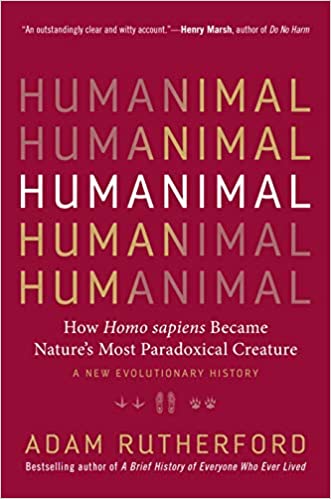
Evolution, Genetics, Evolutionary Biology, and Race (and Racism)
Decoding Racial Ideology in Genomics ( Johnny E. Williams and Joseph L. Graves ; 2016 )

The Emperor's New Clothes: Biological Theories of Race at the Millennium ( Joseph L. Graves ; 2003 )

Graves argues that racism has persisted in our society because adequate scientific reasoning has not entered into the equation. He champions the scientific method and explains how we may properly ask scientific questions about the nature of population differentiation and how (if at all) we may correlate that diversity to observed human behavior. He also cautions us to think critically about scientific findings that have historically been misused in controversies over racial differences in intelligence heritability, criminal behavior, disease predisposition, and other traits.
According to Graves, this country cannot truly address its racial problems until people understand the empirical evidence behind this truth that separate human races do not exist. With the biological basis for race removed, racism becomes an ideology, one that can and must be deleted.
How to Argue With a Racist: What Our Genes Do (and Don't) Say About Human Difference ( Adam Rutherford ; 2020 )

How to Argue With a Racist emphatically dismantles outdated notions of race by illuminating what modern genetics actually can and can’t tell us about human difference. We now know that the racial categories still dividing us do not align with observable genetic differences. In fact, our differences are so minute that, most of all, they serve as evidence of our shared humanity.
Human Civilization and Evolution
Guns, Germs, and Steel: The Fates of Human Societies ( Jared Diamond ; 2005 )

In this ‘‘artful, informative, and delightful’’ (William H. McNeill, New York Review of Books) book, Jared Diamond convincingly argues that geographical and environmental factors shaped the modern world. Societies that had had a head start in food production advanced beyond the hunter-gatherer stage, and then developed religion –as well as nasty germs and potent weapons of war –and adventured on sea and land to conquer and decimate preliterate cultures. A major advance in our understanding of human societies, Guns, Germs, and Steel chronicles the way that the modern world came to be and stunningly dismantles racially based theories of human history. Winner of the Pulitzer Prize, the Phi Beta Kappa Award in Science, the Rhone-Poulenc Prize, and the Commonwealth club of California’s Gold Medal.
1491: New Revelations of the Americas Before Columbus ( Charles C. Mann ; 2006 )

Contrary to what so many Americans learn in school, the pre-Columbian Indians were not sparsely settled in a pristine wilderness; rather, there were huge numbers of Indians who actively molded and influenced the land around them. The astonishing Aztec capital of Tenochtitlan had running water and immaculately clean streets, and was larger than any contemporary European city. Mexican cultures created corn in a specialized breeding process that it has been called man’s first feat of genetic engineering. Indeed, Indians were not living lightly on the land but were landscaping and manipulating their world in ways that we are only now beginning to understand. Challenging and surprising, this a transformative new look at a rich and fascinating world we only thought we knew.
A Brief History of Everyone Who Ever Lived: The Human Story Retold Through Our Genes ( Adam Rutherford ; 2018 )










